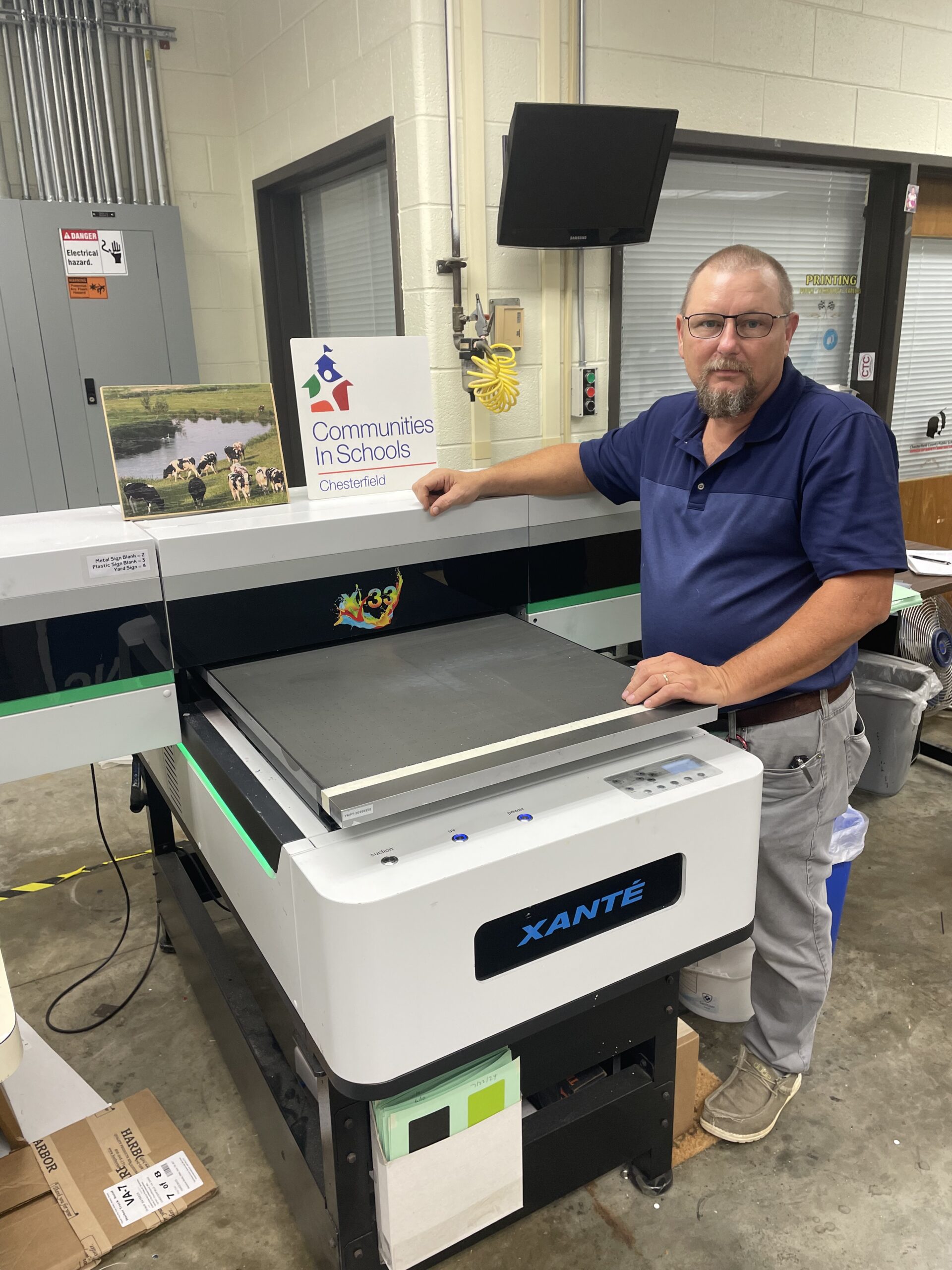
When COVID nixed graduation ceremonies in 2020, many K-12 and university in-plants saw a big demand for yard signs. At Chesterfield County Public Schools (Chesterfield, Virginia), 75% of those signs were sent outside for production.
“We were losing a lot of business,” recollects Brian Morris, printing supervisor. That experience inspired his in-plant to purchase a Xanté X-33 flatbed printer in 2021, with a 24×36″ print bed and print clearance of up to 6″.
“We can now crank out 110-120 signs per day,” he says.
Morris says the shop outsourced 5,500 yard signs in 2020, and 4,400 the year after. Those are all now printed in-house, resulting in what he calls, “absolutely good savings.”
And while yard signs are a primary focus of the in-plant’s flatbed production, the shop has quickly grown beyond this gateway application, adding rigid posters that can be placed on an easel; signage for schools, such as room numbering and identification (e.g. Media Lab); and 18×24″ metal signs, featuring messages such as “No Parking.” Thanks to the flatbed purchase, the in-plant was able to bring signage in-house for the district’s 67 buildings, which serve the needs of some 67,000 students.
One unique application the in-plant has produced: it printed on the blades of hand saws; an adhesion promoter was applied to the metal prior to printing.
Morris says the delivery of the Xanté system was “all pretty easy.” Atlantic Graphic Systems (the shop’s equipment supplier) uncrated the machine and provided training. He shares that the time between delivery and legitimate, salable production was minimal.
Morris says if he could add additional capability to the shop’s flatbed workflow, it would be to add the rotary printing capability Handy opted for in his shop. Also, he says, a digital cutting system would be beneficial, “but we don’t have the real estate for that.”
Asked to clarify the savings the flatbed has brought to the school system, Morris says that by bringing the work in-house, the shop is able to charge less than a wholesaler might. The acquisition has also increased the value of the in-plant to the school district it serves.
“We’re able to do it in-house, [and] give better service,” he notes. “The school district and the county get priority.” And most importantly, he adds, “customers like that we can do it.”


